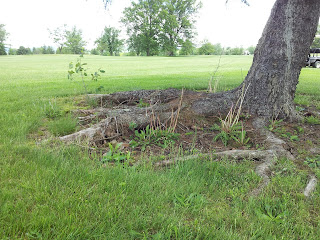As your couch becomes older it probably won't be getting larger and encroaching upon other parts of your home, as your trees and shrubs may. Mature plant size, placement, and the intent of design (as landscape architects put it) are paramount when choosing trees and shrubs for the landscape. We all want immediate results, but immediate results in the landscape can mean high maintenance costs or whole tree/shrub removal in the future. The latter are fine, as long as you understand them from the start.
While redoing a room in your home can be completed fairly easily, sometimes achieving that intent of design in the landscape can be a process. When landscapes are young, they usually look good. The plants are all small, healthy, and well spaced. Then, just like all little children, your landscape hits adolescence, and suddenly things don't look as cute and pretty. Not everything is growing at the same pace, some plants are dead, or dying, and things are generally awkward. This is where having a design intent is important, and where keeping to it can be difficult. Many people will want to take action, and maybe some action is needed. This may include replacing a few plants, doing some fertilizing, or pruning, but should not be drastic as replacing whole swaths of landscape. Keep in mind, many of your favorite gardens and arboreta (Longwood Gardens, Kew Royal Botanical Gardens, The Morton Arboretum, The Arnold Arboretum, etc) began with young and immature plants.
Change in the landscape is good, and something I encourage my clients to do. Why nurse along an old decrepit azalea, when it can be replaced by one of the new Encore varieties. That being said, staying the course is often the best way to go, because one day that spindly name your favorite tree is going to be magnificent.
 |
| These trees were 3-inch caliper when planted a few years after WWI. They are now close to 40-inches DBH |








